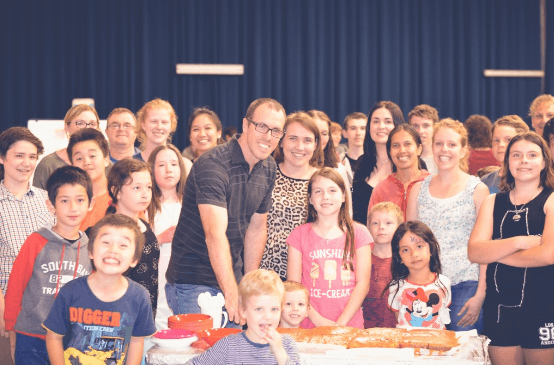It's a tough slog for Aussie church planters
Pastor Jai Wright was so discouraged by the slow growth of his church plant in Mackay in Queensland that after two and a half years he was wondering if it should keep going.
Pastor Jai Wright was so discouraged by the slow growth of his church plant in Mackay in Queensland that after two and a half years he was wondering if it should keep going.
When he set up the Mackay Evangelical Church (MAKE) straight out of Bible college in 2011, he had expected to have a weekly attendance of about 100 or 150 within three years. Instead only about 30 people were coming each Sunday.
“It hadn’t gone as we’d hoped, and we were not wanting to waste people’s time, money and effort. We want to be responsible before God.”
But he shouldn’t have felt so crushed: a new survey shows his growth rate was normal in the Australian context.
The survey of 110 new churches set up since 2000 reveals that church planting in Australia is slower and more difficult than in the United States but is similar to the Canadian experience.
“Church planting in Australia is a long, hard slog, so realistic expectations are key,” says Ed Stetzer, president of LifeWay Research, which did the survey in partnership with Australian church planting network Geneva Push.
“The data shows that growth is slow and it takes time to build momentum for mission,” adds Scott Sanders, Executive Director of Geneva Push.
The surveyed churches had lower weekly attendances, fewer new commitments to Christ and a lower proportion of congregations with a quarter or more unchurched members than in the United States.
The average weekly attendance figures ranged from 38 in the first year to 70 by year four. The comparative figures for the US sample were of 51 in the first year to 124 in the fourth year.
However, some Australian church plants did better than the average. For example, Salt Church in Wollongong, south of Sydney, has reached 215 weekly worshippers after four years.
“At the end of 2014 we moved into our own space, which helped raise our profile in the community significantly and we’ve doubled in size in the past 18 months,” says Pastor Dan Godden.
An encouraging statistic from the survey was that a third of weekly worshippers in the new churches were dechurched or newcomers (those who were not attending any church five years ago) compared with just six per cent identified in established churches.
Wright says the key to deciding to carry on was being coached by an experienced church planter and realising how many people had come through the doors and stayed.
He says his training had equipped him to cope with the stresses of a fast-growing church rather than how to pastor a slow-growing one, and he had tried to implement programmes and act like a larger church too quickly.
“Given our context, it would have been healthier to have more realistic expectations that we would grow by only ten people a year or a bit less,” he says.
“It would have helped our team to plod along and have more realistic expectations so that you don’t feel you are failing when that’s not necessarily the truth.”
The Australian survey was carried out between October last year and February 2016, with the results compared with those of similar surveys of church plants in the United States and Canada also conducted by LifeWay Research. (See the Australian report at genevapush.com/resources.)
The number of people in new churches who fall into the “quarter or more unchurched” category was 55 per cent in Australia, lower than both the United States (69 per cent) and Canada (61 per cent).
Other areas where Australian church plants lagged behind the US were in new commitments to Christ: fewer than five for the first few years in Australia compared with more than ten in the US and slightly fewer than ten in Canada.
However, Sanders says it’s important to realise that Australian church planters are reaching out to a more post-Christian culture than in the US.
“It’s really important to understand that Australia is not America. The church planting literature has largely been American. It’s great to have Australian data to tell the story of Australian church planting. I think it’s a great encouragement for someone like Jai Wright and church planters across Australia to go ‘It’s OK.’
“He talks about giving his launch team and supporters the right expectations – ‘We’re going to need more support, it’s going to be a slower process, but compared to everyone else we’re doing well.’”
The survey’s title of “Support, Experience and Intentionality” highlights three key factors that make a church plant most effective: a membership class or training programme that builds a sense of community in a new church; building a coalition of outside prayer partners to help build a church; and having a pastor contributing financially to the church. Centralised accounting services also have a positive impact.
Email This Story
Why not send this to a friend?


